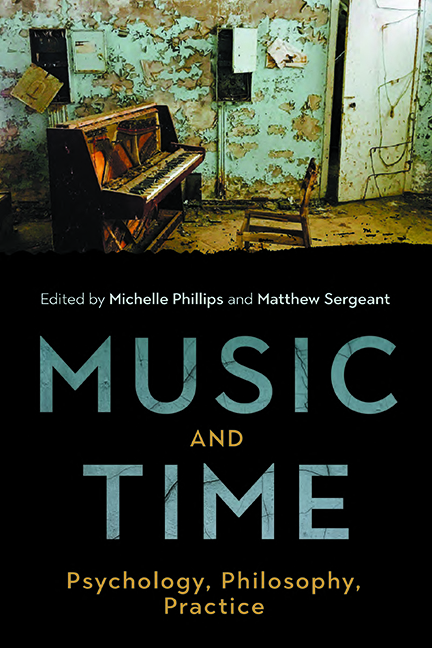Introduction
Published online by Cambridge University Press: 07 October 2022
Summary
A Wonderous Mess
All music engages with time. This is not a useful statement to begin a volume of perspectives on music and time such as this. That is, of course, not to suggest that such a statement is untrue. From the sago-pounding songs of the Kaluli people to the live-coding performances of an algorave, music manifests in time and time manifests in music. Even the provocative title of John Cage's 0’00” (1963) entwines itself with issues of time through problematisation and rebuttal. Instead, the opening statement is not useful because it is too simple. What we mean by time in a musical context is, in itself, extremely multifaceted.
In recent years, the printing of approximate durations, in minutes, displayed next to a particular work in a concert programme has become increasingly common. Here, time is something numerical; something that can be measured; a kind of quantity. But in listening to the piece itself we are immediately in a different kind of domain. Now time refers to an internal experience or judgement – of long, short, later, or soon. Here, time can take on certain characteristics and qualities; it can fly, or drag, or sometimes even stop.
Time is also a matter of past, present, and future. In this way, time in music becomes almost inextricably bound to ideas of memory. As a means of accessing the past, memory is fundamental to much musical structure. We need to have remembered a musical idea (a theme, a motif, a harmonic progression, a gesture, etc.) to recognise and notice its resurgence or development later – or establish that what we are hearing is new. Our experience of time in music can also look forwards into the future, through expectation – something that composers and performers often subvert and render into a state of play. Somewhere between the two is something called ‘the present’ or just simply ‘now’ – the musical event to which we are currently listening. But how narrow is this bandwidth? The current phrase? The current note? The current period of the sound wave? If independent from the past and the future, the musical now seems to appear as a strip of infinite thinness, like a mathematical infinitesimal. A moment in time with no duration? This itself presents a puzzle to be solved.
- Type
- Chapter
- Information
- Music and TimePsychology, Philosophy, Practice, pp. 1 - 8Publisher: Boydell & BrewerPrint publication year: 2022

